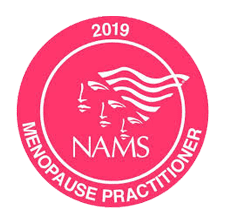Low Libido or Low Testosterone
The medical term for low testosterone in men is hypogonadism, and this refers to reduced or absent secretion of testosterone. Testosterone is produced primarily by the testes. Testosterone plays an important role in the development and maintenance of many male physical characteristics such as sex drive, sperm production, muscle mass and strength, fat distribution and bone mass. Hypogonadism can occur when the testes themselves do not function properly, or if there are problems in the brain, (hypothalamus or pituitary gland), both of which play important roles in controlling the sex glands.
As a man ages, it is normal for testosterone levels to gradually decline. In America, approximately 2 million to 4 million American men have hypogonadism, but only about 5 percent currently receive treatment. In 2003, a large VA center survey suggests that the prevalence of men presenting with impaired libido and erectile dysfunction due to low testosterone may actually be much larger than previously thought.
Symptoms of Low Testosterone
Decreased testosterone causes a wide variety of clinical findings. The sexual manifestations of low testosterone include diminished sexual desire and sense of vitality as well as erectile dysfunction. Additionally, men with low testosterone may experience decreased size or firmness of the testicles, breast enlargement and muscle loss. The growth of body hair usually slows, but the voice and size of the penis typically do not change.
Hypogonadism also increases the risk of osteoporosis and fractures. Mental and emotional symptoms similar to those of menopause – mood swings, depression, irritability and fatigue may occur. When the onset is rapid, men can experience hot flashes.
Diagnosing Low Testosterone
If a physician suspects low testosterone based on symptoms and physical examination, the diagnosis must be confirmed by laboratory testing. Most circulating testosterone is bound to sex hormone-binding globulin and albumin.
In young adult men, only about 2 percent of testosterone is unbound (free testosterone). Total testosterone (bound plus free testosterone) is the preferred measure since tests for free-testosterone are not as accurate.
Your physician may also order sex hormone binding globlin and total testosterone to manually calculate free testosterone levels as part of the medical evaluation for low testosterone. Testosterone levels are best measured early in the morning. This is because testosterone level has a daily pattern (diurnal) where it is most abundant at about 8 a.m. Testing of LH and FSH, other hormones that stimulate the testes, are also performed to determine whether the cause of low testosterone is primary or secondary.
Contact Us
13126 120th Ave NE
Kirkland, WA 98034
Phone: (425) 398-9355
Fax: (833) 905-2316
Email: info@drserena.com
We serve patients Monday through Friday from 8 a.m. – 4:30 p.m.
COMPLETE THE FORM TO SEND US YOUR QUESTIONS OR COMMENTS
"*" indicates required fields




